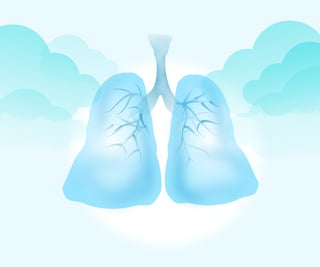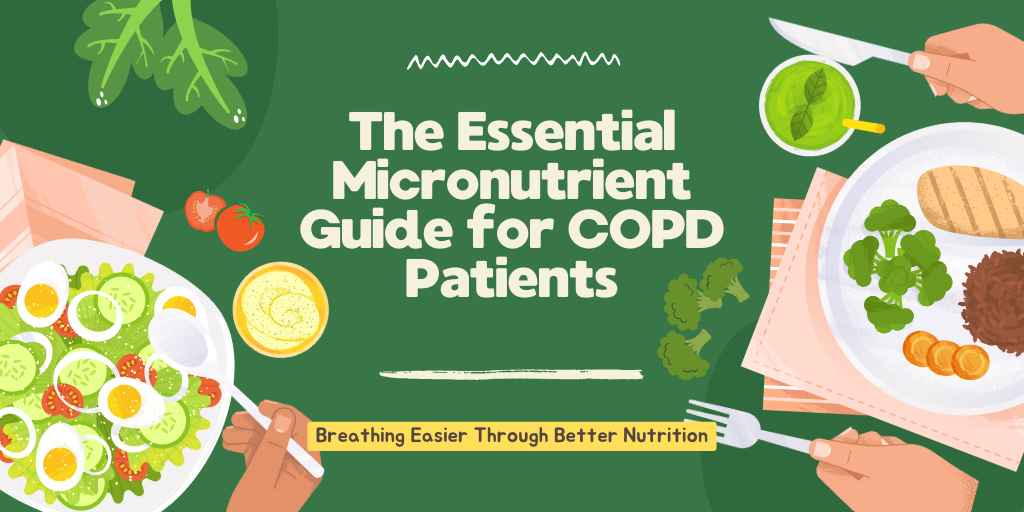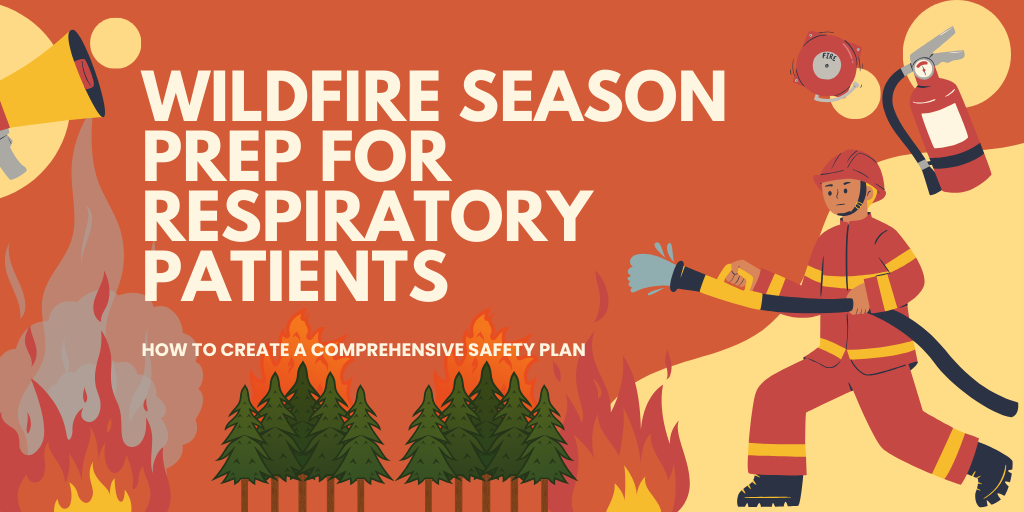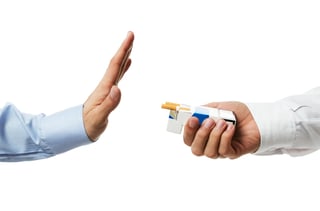
One of the most common New Year’s resolutions that people make is to quit smoking. If this is the year you’ve decided to become tobacco free, this is a game plan to help you quit, and remain cigarette and smoke free. This guide will help you understand the risks of smoking as well as the psychology behind both the habit and the addiction.
It will also give you actionable strategies to beat both the physical dependency and psychological hook. The second you put out your last cigarette the healing begins so let’s get started!
Health Risks
 The risks of cigarette smoke have been understood for decades, yet millions struggle every year with tobacco addiction. Of the top ten causes of death worldwide, cigarette smoking either directly causes, or contributes to more than half including:
The risks of cigarette smoke have been understood for decades, yet millions struggle every year with tobacco addiction. Of the top ten causes of death worldwide, cigarette smoking either directly causes, or contributes to more than half including:
Cancer
Smoking is the primary risk factor for developing lung cancer and is responsible for 87% or lung cancer deaths. Smokers also have an increased chance for developing a second primary cancer and tobacco use is a known contributor to cervical, liver, stomach, pancreatic, and colon cancer, among others.
Heart disease
Smoking causes arteries to narrow throughout your body. This means your heart receives less blood and oxygen causing permanent damage.
Stroke
Artery damage also leads to an increase in strokes by making your blood more likely to clot. Strokes are caused when the brain is temporarily deprived of blood killing brain cells which have been deprived of oxygen.
COPD
Chronic Obstructive Pulmonary Disease, more commonly known as COPD is currently the third leading cause of death worldwide. There are other factors involved but smoking causes roughly 80% of all COPD cases.
Diabetes
Smoking increases the likelihood of developing type 2 diabetes by 30 – 40 percent. It also exacerbates diabetes complications such as heart and kidney disease. Impeding arterial flow to legs and feet leads to infection and an increasing likelihood of amputation and permanent nerve damage.
Hypertension
Nicotine raises your blood pressure and heart rate and also narrows arteries and contributes to their hardening.
Respiratory Infections
Smoking weakens the respiratory system as a whole, therefore impairing the lungs’ ability to fight off infection. Smoking is also known to contribute to the frequency and severity of infections.
Secondhand Smoke
 Smoking is not just dangerous to smokers; it puts the health of loved ones exposed to secondhand smoke at risk as well. It is estimated that secondhand smoking causes heart disease in tens of thousands of adults and approximately 3,000 deaths from lung cancer in the US alone.
Smoking is not just dangerous to smokers; it puts the health of loved ones exposed to secondhand smoke at risk as well. It is estimated that secondhand smoking causes heart disease in tens of thousands of adults and approximately 3,000 deaths from lung cancer in the US alone.
As kids grow and develop, they are perhaps the most vulnerable to the hazards of secondhand smoke. Even if parents only smoke outside, children are still exposed to residual chemicals that linger on clothing or ashtrays.
It has been shown that kids that live with smokers are more prone to:
- Ear Infections
- Tooth Decay, Gingivitis, and Periodontitis
- Colds, Flu, and Coughs
- Respiratory and Throat Infections
Children who live in a home with adults that smoke are more likely to become smokers themselves. Even before they’re born secondhand smoke is harmful to little ones. Pregnant women living or working with smokers are more likely to suffer a miscarriage and babies are more likely to be born premature. There is evidence that secondhand smoke increases the likelihood of ADHD or even SIDS.
Understanding the Addiction
These are just some of the many risks of tobacco use. We hope it convinces you to quit smoking if you are a smoker, and if you’re already trying to quit, we sincerely hope this article gives you a good game plan to help you win your fight against tobacco addiction.
It is difficult to break a habit and it’s even more difficult to break a physical addiction and smoking is unfortunately both. No one would tell you that it’s easy, but it’s not impossible. Millions have fought the battle against nicotine addiction and won.
There’s nothing good about smoking when it comes to your health. The good news is that when you quit your body goes to work of its own accord to repair any damage that has been done. Day one of your body without nicotine is day one of a new healthier you!
The first step to conquering tobacco cessation is understanding the psychology behind the smoking habit and the physical factors behind the addiction.
Physical Addiction to Nicotine
One of the main reasons that nicotine is so addictive is that it goes right to work on the portion of your brain that is associated with pleasure and reward.
Dopamine is a chemical that is a neurotransmitter which means that it is responsible for transmitting signals between the neurons of the brain thereby triggering certain sensations. Dopamine has many functions such as movement and memory but as it applies to addiction, it triggers feelings of pleasure and satisfaction.
Nicotine fools the body by artificially elevating dopamine levels. It also widens capillaries allowing for quicker and deeper absorption of chemicals. The detrimental effect is twofold. Not only does it cause your body to crave the positive sensations of smoking, nicotine also suppresses the body’s natural production of both dopamine and serotonin, both essential for motivation and feelings of well-being.
So when a smoker tries to quit cold turkey, so to speak, depression and anxiety set in, stifling any motivation to continue. Often a downward spiral of quitting, starting again just when dopamine levels are recovering, feeling motivated to quit, quitting, motivation leaves, starting again- over and over and over. Breaking this cycle is essential to successfully freeing yourself from tobacco addiction.
Emotional Addiction to Nicotine
Part of the emotional side of the addiction directly relates to the false dopamine reactions as discussed above. The emotional addiction stems from the fact that even though people recognize the negative health factor of smoking, the ritual of smoking is associated with something that is happy and emotionally satisfying.
The idea of taking a break from work to go outside and smoke is associated with stress relief and relaxation. Smoking after dinner is associated with the feeling of satisfaction after a good meal and a way to unwind at the end of the night. Smoking while out with friends at a bar is associated with fun and letting off steam on the weekend. Smoking while driving is part of the ritual of escaping from boredom while sitting in traffic or part of the moving meditation of a long road trip.
The idea of smoking becomes inextricably linked with the positive feelings of those moments and it just becomes a habit to associate having a free moment with grabbing a smoke.
Conquering Nicotine Withdrawals
Now that you have a better understanding of the addiction itself, you can take a more strategic approach to beating it. First let’s tackle the physical aspect. The key to beating the physical addiction is both weening yourself off of the physical dependency to nicotine while simultaneously normalizing dopamine and serotonin production.
To go one hundred percent cold turkey is an option but it’s a tough one, for reasons we have already discussed. There are several “step-down” products that let your body gradually get used to lower levels of nicotine while you deal with the emotional aspect of the addiction.
Nicotine Patches
One of the most popular methods used to help with nicotine withdrawal is the use of nicotine patches. They supply a steady supply of nicotine via a transdermal, stick-on patch that is changed every 24 hours.
Patches are available in diminishing nicotine strengths to slowly get your body used to less and less nicotine. Users can go at their own pace and step down nicotine levels as they feel ready. Generally the process takes 9-12 weeks to complete. The FDA doesn’t require that use ceases at any given time but states that 8 – 10 weeks is ideal.
Pros: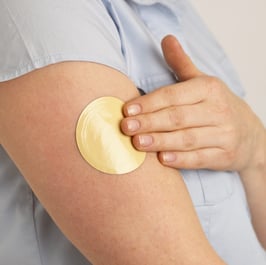
- Readily available over the counter
- Allows users to go manage their own dosages.
- Easy to use
- Least addictive of nicotine replacement aids
Cons:
- Can cause skin irritation
- Can disrupt sleep cycles
- Sometimes causes vivid dreams
- Not helpful for sudden elevation in cravings
Nicotine Gum
Nicotine gum releases small amounts of nicotine that is absorbed through the lining of the mouth. The user chews the gum until they feel a slight tingling sensation. They then place the piece of gum between their cheek and gums to allow the nicotine to enter the blood stream.
Nicotine gum is available in a few varying strengths but it’s not a very comprehensive step-down dosing, quit method. It is meant to be used as a supplement to other methods to help with elevated cravings.
Pros:
- Relatively inexpensive
- Can help with sudden cravings
- Safe to use with other methods of nicotine delivery
- Helps with the oral fixation aspect of quitting
- No prescription needed
Cons:
- Overuse can be dangerous
- Can cause sleep issues
- Has been known to heighten anxiety
- Not a long term solution
Medication
Currently there are two different medications that have been approved by the FDA to help in the fight against nicotine addiction. They are, Chantix and Zyban. If you wish to go this route you will need a prescription from your doctor.
They both take different approaches to chemically aid in stopping cravings for cigarettes. Chantix interferes with receptors in the brain that respond to nicotine thereby reducing the false dopamine effect that you get from nicotine.
Once you are smoking less, it also helps to lessen the withdrawal symptoms. Zyban is essentially a slow-release anti-depressant. It works in concert with brain chemistry to alleviate cravings.
Pros:
- Have a relatively high success rate

- Can be used over a period of time increasing chances of permanently quitting
- Easy to use
- Doctor Supervised
Cons:
- Both medications have side effects which you should speak to your physician about.
- Prescription Required
- Somewhat costly, though cost pales in comparison to long term tobacco use and health risks associated with it.
- Can disrupt sleep
- May not be an option if you have certain pre-existing conditions
Normalizing Dopamine and Serotonin
In addition to finding ways to combat nicotine withdrawals it is essential to find ways to help normalize serotonin and dopamine levels. There are several prescription anti-depressants available that work to increase serotonin and dopamine production. Over the counter supplements are also readily available at any health food store.
You can discuss this option with a physician if you want to explore those options. However, there are several things you can do without medication that will boost those feel good chemicals in your body.
Regular physical activity releases endorphins and fosters increased dopamine production
As a bonus it will help burn off some of the stress you might be feeling from not being able to smoke. Natural air and sunlight are also essential for balanced body chemistry.
Limit sugar intake
Sugar disrupts dopamine levels as evidenced by the false “sugar high” you get after ingesting sweets or drinking a soda.
Cut down on caffeine
The temporary energy boost that a cup of coffee or energy drink gives you is a false dopamine reaction that tells your body that it doesn’t need to product any natural dopamine of its own. It’s also detrimental to restful sleep and serotonin production.
Increase I-phenylalanine intake
It is the amino acid that stimulates the production of dopamine.  There are several supplements that contain this specific amino acid but you can also get it from foods such as:
There are several supplements that contain this specific amino acid but you can also get it from foods such as:
- Bananas
- Cherries
- Yogurt
- Eggs
- Beans
- Watermelons
- Apples
- Almonds
Ensure that you are getting enough Magnesium
The current recommended daily allowance is 400mg.  You can take Magnesium pills or eat foods such as:
You can take Magnesium pills or eat foods such as:
- Seeds (especially pumpkin)
- Leafy Greens
- Avocados
- Dark Chocolate
- Dried Fruit
B6 is essential for healthy serotonin levels
Vitamin capsules and supplements are available or eat plenty of:
- Chicken and Turkey. Turkey is also rich in Tryptophan which is also a great serotonin booster.
- Spinach
- Turnip Greens
- Fish (especially cod, tuna, halibut, and snapper)
- Celery
Conquering the Emotional Addiction
Trying to follow a regimented sleep schedule will also help with mood and overall well-being. Using these techniques to curb cravings and restore your body to its natural balance will greatly increase your chances of remaining tobacco free for good.
Dealing with the emotional dependency on tobacco is of equal importance. From a psychological perspective breaking a habit consists of three main elements: disrupting habitual responses, identifying and replacing triggered reactions, and staying motivated.
Breaking the Autopilot Reaction
When you’re bored, you reach for a cigarette. When you’re stressed, you reach for a cigarette. When you want some time away from a mundane task, you reach for a cigarette.
To break this cycle it is necessary to be self-vigilant and recognize when you have outsourced your brain to a habit rather than dealing with the feelings have emerged.
Preparation Before Your Quit Date
To help you identify your triggers start a journal that charts the times that you regularly smoke. Some things that you should note in your quit journal are:
- Times of day you smoked
- Where you smoked
- Who you smoked with
- How you were feeling when the urge to smoke came
Really trying to identify what the motivator is to smoke in any given situation is going to help you in the days ahead.
Recognizing Triggers and Finding Suitable Substitutes
Once you have identified some of triggers that cause you to want to smoke, you can replace the autopilot response of reaching for a smoke with something healthier and more positive.
Psychologists estimate that the average cigarette craving lasts for no more than five minutes. If you can think of a suitable and healthy 5 minute distraction and take it on one craving at a time, your battle is won.
If you find yourself with a strong craving to smoke at a certain time of day, try to schedule another activity for that time. If you wake with a strong urge to smoke, instead of grabbing a bowl of cereal, kill some time fixing yourself some eggs.
They’re a healthy protein and dopamine booster. Sit and read the paper or do the crossword puzzle. If you like a smoke before bed, find a good intriguing read to lull you to sleep.
If a certain place triggers your smoke craving you may have to avoid that spot for a while or find another activity to do there. If you regularly go to a sitting area to have a smoke at lunch, take a walk instead. If you want to smoke at the bar, invite friends to a bar that has trivia games, or pool, or darts, and do that instead.
 Smoking buddies might be the toughest of the triggers to avoid. In a best case scenario you might be able to talk them into getting them to join you in quitting so you can still hang out together and you can lend each other some emotional support and encouragement.
Smoking buddies might be the toughest of the triggers to avoid. In a best case scenario you might be able to talk them into getting them to join you in quitting so you can still hang out together and you can lend each other some emotional support and encouragement.
If they’re not going to quit with you, you might have to steer clear for a time or engage somewhere that smoking is not allowed.
If you live with people who smoke ask them to confine their smoking to an area of the house and avoid that area. Also ask them to stow their lighters and packs of cigarettes away so you won’t be tempted to sneak one. It’s also helpful to keep ashtrays clean and out of sight.
The slipperiest triggers of all are the emotional ones. It’s hard to pinpoint emotional triggers because sometimes you’re in the midst of your habitual response before you realize it and the initial emotions aren’t always clear.
Try to be as detailed as you can in your journal and if you’re smoking for stress relief practice some other forms of stress reduction. Step up your exercise routine or practice some meditation. Recognizing your feelings are the first step in not letting them get the better of you. Pausing a minute and saying, “Okay, I’m feeling stressed so I’m going to take a deep breath and take a walk,” versus mindlessly grabbing a smoke is the way through this five minute craving.
In the early stages of your tobacco free life the best course of action might be to try to avoid stressful situations. Of course it’s not possible to avoid stress 100% but if there’s that one co-worker who drives you crazy or that relative that knows how to push your buttons, avoid interacting as much as possible, especially during the early weeks.
Knock Out those 5 Minute Cravings
Get creative and find fun and enriching trigger replacements. You’re embarking on a new healthier life without tobacco, so although it’s hard work, try to make it fun too. It’s just 5 minutes! You got this!
If Your Trigger is Boredom
- Bomb the universe or save the princess, ie. Download some games on your phone!
- Take advantage of the reading list option on your phone. If you see some interesting articles or found a new book put them on the list and then if you’re bored and ready to smoke, read them instead.
- Learn a new skill. There are short videos on You Tube on how to do everything from communicate in sign language, to do home repairs, to how to do Rune divination.
- Take up a new hobby. Needlework, beading, building a model, or anything else that keeps your mind and hands occupied is ideal.
- Unleash your inner Leonardo (not the turtle). There are a series of books on learning to sketch called 5-Minute Sketching. You can learn in very short lessons how to sketch people, architecture, still lives, etc. Many cities even have “sketch crawls” where you can meet other budding artists as well.
- Make a chore list that you can look at whenever you have some empty minutes to fill. There’s always that one drawer we keep meaning to clean out or pile of paperwork you’ve been meaning to sift through. Clear up some cupboard space by sorting and getting rid of unmatched Tupperware lids and containers. Clean out the car. Organize family photos. You can divide your chore list into estimated time increments. Sorting out the silverware drawer and cleaning up your email list goes in the 5-10 minute slot. Cleaning the blinds in the living room goes in the 30 – 45 minute slot. Painting the garage goes in the “I’m stressed out and don’t have anything to do until dinnertime” slot. You get the idea.
If Your Trigger is Stress
- Go for a walk or a jog.
- Download some guided meditations on your phone.
- Talk about your feelings.
- Write about what’s stressing you out in a journal. Going over entries later might help you identify triggers more specifically and help you come up with some strategies for dealing with them.
- Handball, foot bag, or Yo-Yos are always a fun option.
- Turn up the music and dance like no one’s watching. It’s good exercise and dancing is good for brain health as well.
If Driving Triggers Cravings
- Learn to hablar español or parler français with some language CDs.
- Make a playlist and do your best car pool karaoké.
- Audio books make a good driving companion.
- Vary your route to familiar places. You’ll have to pay closer attention and there might be some interesting, new things to see!
- Bring along some snacks like sunflower seeds, licorice, or gummy candy.
If Certain Flavors Trigger Cravings
- Cigarettes and coffee are a ritual and a combo that many cherish. Try a new coffee shop to change up your routine. Buy some new flavors of scones to try or maybe some dried fruit. You might find a flavor combo that you like even better. Give yourself a few extra minutes of sleep in the morning giving you less time to linger over coffee.
- If an after dinner cigarette is your thing. Schedule something fun right after dinner. Movie night with popcorn, or work on a hobby or project you’ve been wanting to tackle. Volunteer to the be the one to do the dishes. Challenge the family to a board or card game after dinner.
- If a glass of wine or beer in one hand makes you want a cigarette in the other go for a drink where they don’t allow smoking if possible or as we’ve discussed before, go to a bar where they have other fun things to do. In the first few weeks, you may have to avoid drinking altogether as alcohol may undermine your willpower.
Find Motivation
You’re fighting a battle for your health and wellbeing; you’re going to need some motivation and encouragement. Find little ways to congratulate yourself each step of the way. Find what gives you strength to draw on to push forward whether it’s leaning on a friend or loved one, charting your physical progress, or just getting through one more day, or one more hour without a cigarette.
Think about what motivated you them most when trying to quit smoking and draw strength from that as time goes on. Asking for support and help is sometime uncomfortable but your family and friends want you to succeed in giving up smoking so they would be happy to help.
Motivational Tools
Your family and friends can be a great source of encouragement during this time. Keep phone numbers handy of people willing to talk you through any overwhelming cravings. Keep a photo of family or loved ones where you can see it when you’re having a craving. You might even have them record some videos on your phone that you can take a second to watch when the going gets tough.
To remind yourself how much healthier you’ll be in the coming months plan some trips or outings to places that might have been challenging to visit as a smoker. Plan some hikes nearby or try kayaking this summer.
You may not have considered how much money you’ll be saving as a non-smoker. Cigarettes cost roughly $6/pack. If you smoke 5 packs a week you’re saving $30/week or $120/month. Sure, you could use it to pay down debt or boost your retirement nest egg but it’s ok to save for something fun to celebrate your victory over tobacco.
In 4 weeks you could have enough for a larger television. In 8 weeks you could plan a weekend getaway. In 3 months you could have enough for a plane ticket to London. Next year you could have a down payment for a new car or motorcycle. Keep a picture of whatever you’re saving for on your phone or desk as a reminder. You can also spend some of your free time researching the idea or product.
Celebrate the Milestones!
We hope these tools will help you build a path to success! The really good news is that the second you put out your last cigarette, your body goes to work repairing itself.
Healing Timeline
20 minutes after you put out your last cigarette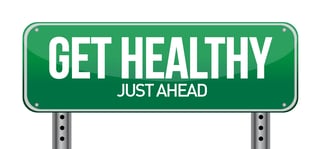
- Your heart rate begins to drop back to a normal level.
2 Hours after
- Your heart rate and blood pressure begin to normalize.
12 Hours
- Carbon monoxide levels begins to decrease and oxygen levels increase.
24 Hours
Heart attack risk begins to decline.
48 Hours
- Nerve endings begin to regrow and sense of smell and taste improves.
3 Days
- Nicotine is completely out of your body which is good news, but you may experience a spike in cravings. Stay busy and stay positive! Of course if you’re using a patch or gum, you will still have some in your system but it will be greatly reduced from when you were smoking regularly.
3 Weeks
- Lungs begin to clear and circulation and heart function will be greatly improved during this time. Withdrawal symptoms will begin to subside around this time.
1 Month
- Cilia are hair like filaments within the lungs whose job it is to filter germs, fight off infection and clear out mucus. After a month of not smoking the cilia begin to repair themselves so they can do their job more effectively. Coughing and shortness of breath will greatly diminish over the next several months.
1 Year
- Your risk of developing heart disease is lowered to half of what it was when you were smoking.
5 Years
- Your risk of having a stroke is the same as someone who has never smoked.
10 Years
- Your risk of dying from lung and other smoking related cancers is half of what it was when you were smoking.
15 Years
- Your risk of heart disease will be the same as someone who has never smoked. Your risk of developing irregular heartbeats is also reduced to normal levels.
Clear Your Lungs
The single best thing you can do for your lung health is giving up smoking but in addition, you may want to consider taking some dietary measures that will help clear your lungs. Be sure to drink plenty of water or herbal tea and add some of these things to your diet.
Chilies and Curry
Spicy foods liquefy mucus and keep air passages nice and clear. Cayenne pepper is also good. The capsaicin contained in these foods also aid in increasing circulation.
Ginger
Effective anti-inflammatory and fosters the elimination of lung pollutants.
Turmeric
Also an anti-inflammatory and is a cancer cell buster in addition.
Pomegranates and Grapefruits
These fruits are high in anti-oxidants which fight cancer and also aid the body in repairing tissues.
Oranges and Other Citrus Fruits
They are rich in vitamin C and B6 and aid the lungs in more efficient oxygen transfer.
Seeds and Nuts
They keep your hands busy helping with cravings but also contain fatty acids which are great for the cardiovascular system. Pistachios also help lower cholesterol.
Cabbage, Broccoli, Kale, and Other Cruciferous Vegetables
These veggies have been shown to halt the progression of lung cancer and contain high concentrations of chlorophyll which cleans and restores blood.
Garlic and Onions
They lower cholesterol and help the body fight off infection in addition to being good for the heart and lungs. The sulfur rich compounds found in onions help break down phlegm and keep lungs functioning efficiently.
Carotenoids
Yep, they have to do with carrots as well as pumpkins, apricots, and tomatoes. They are strong anti-oxidants as well as rich in Vitamin A which is beneficial to lung health especially for those with chronic conditions, such as asthma.
Blueberries, Blackberries, Raspberries
Dark berries are full of anti-oxidants that help with fighting free radicals that damage tissues and cause infection.
Fresh foods and healthy eating will boost your mood, confidence, and motivation to keep going. Congratulations on making the best decision you possibly could for your health! As you go along on your journey, if you discover any other information that you feel may be helpful to others, please share it with us so we can pass it along!
For other resources try Quit.com or The Quitter's Circle! You can also download this blog post as an e-book to save for future reference! Just click here to download your e-book:









